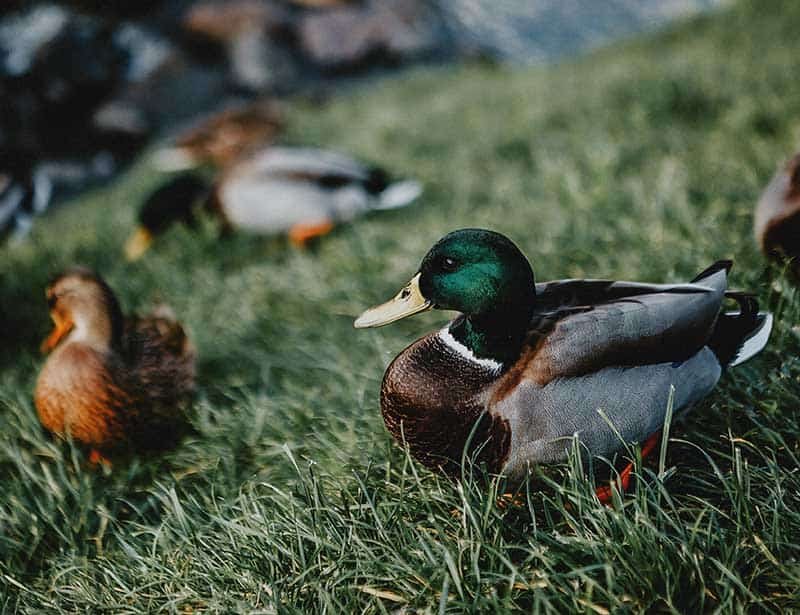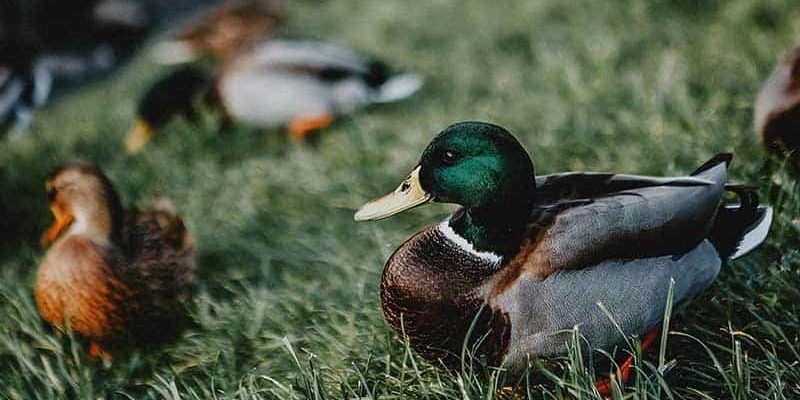
Imagine ducks as the comedians of nature; they waddle around with a carefree attitude and a curious spirit, making them not just fun to watch but also intriguing to learn about. Grab a cup of coffee, and let’s dive into some captivating facts about ducks that might just make you appreciate these feathered friends a bit more.
The Many Species of Ducks
You might be surprised to know that there are over 120 different species of ducks worldwide. While many of us are familiar with the common mallard, these birds range widely in appearance and behavior. For example, the Mandarin duck, known for its vibrant colors and striking patterns, looks like it belongs in a gallery rather than on a pond.
Ducks can be broadly categorized into three types: diving ducks, dabbling ducks, and perching ducks. Diving ducks, like the canvasback, dive underwater to find food. Dabbling ducks, such as the American black duck, feed on the surface of the water. Perching ducks, like the wood duck, are unique in that they actually nest in trees. This variety makes every duck sighting a little adventure, since you never know what you’ll see!
Ducks are Natural Swimmers
Ducks are like the Olympic swimmers of the bird world. Their bodies are perfectly designed for life on water. Their webbed feet act like paddles, allowing them to glide efficiently through ponds and lakes. Plus, their buoyant bodies keep them afloat with ease. And here’s the cool part: ducks can even control how much air they hold in their bodies to help them dive or float.
Honestly, it’s pretty impressive! You might be wondering how they stay so cozy while swimming. Ducks have a special oil gland near their tails that produces oil to coat their feathers. This oil keeps their feathers waterproof, ensuring that they stay dry while swimming. It’s like wearing a high-tech wetsuit, but much cuter!
A Unique Quack
Ducks have a reputation for their distinctive quack. But did you know that not all duck species quack? In fact, some ducks have a wide range of vocalizations and sounds. Certain ducks, like the wood duck, produce soft coos, while others can generate whistles or grunts.
You might think that quacking is just for show, but it serves essential purposes. Ducks use quacking to communicate with each other, signaling everything from alarm calls to mating calls. If you ever hear a loud quack echoing across a lake, it might just be a duck trying to let its friends know it’s time to gather round!
The Importance of Ducks in Ecosystems
Ducks play a vital role in their ecosystems, acting as natural pest controllers and helping to maintain a healthy environment. By eating insects, aquatic plants, and algae, they help keep populations in check. This natural balance can prevent overgrowth, which might otherwise harm the ecosystem.
In addition, ducks contribute to soil health. When they forage for food in mud or shallow waters, they stir up sediment, which helps to aerate the soil. This process allows nutrients to circulate and encourages plant growth. You might say ducks are like the gardeners of their habitat, ensuring everything stays in harmony.
If you’ve ever observed a mother duck leading her ducklings across a pond, you know how heartwarming it can be. Ducks are dedicated parents, often fiercely protective of their young. After hatching, ducklings can follow their mothers almost immediately, learning to swim and forage for food with her guidance.
What’s truly remarkable is that mother ducks can recognize and respond to the individual calls of their ducklings. This ability ensures that even in a busy pond, they can keep track of their little ones. Imagine a bustling scene where a mother duck calls out, and her ducklings come waddling back in unison – it’s a real-life example of teamwork!
Ducks in Culture and Folklore
Ducks have captured the human imagination for centuries and appear in various cultures and folktales around the world. From the classic story of “The Ugly Duckling,” which teaches us about acceptance and beauty, to the playful character of Donald Duck, they have found their way into our hearts.
In some cultures, ducks even symbolize prosperity and fidelity. For example, in Chinese folklore, a pair of mandarin ducks represents marital bliss and love. It’s interesting how these simple birds evoke such deep meanings and connections in our everyday lives, isn’t it?
The Fascinating Variety of Duck Colors
If you’ve only seen the typical brown mallard, you’re missing out! Ducks come in an array of colors and patterns. The Mandarin duck is famous for its vibrant orange, blue, and green feathers, while the Northern Shoveler features a unique green head and a broad, spoon-shaped bill.
These colorful plumages serve practical purposes as well. For many species, bright colors help attract mates during breeding season. Male ducks are often more colorful than females to showcase their fitness. However, female ducks usually sport more muted tones, which help them blend into their surroundings, especially when nesting.
Ducks Are Migratory Birds
Another fascinating fact about ducks is their migration patterns. Many species, like the migratory ducks, travel thousands of miles between their breeding and wintering grounds. This journey isn’t just a leisurely stroll; it’s essential for their survival.
During migration, ducks often fly in a V formation, which conserves energy and allows them to navigate effectively. You might see this impressive sight in the sky, where each duck takes a turn leading the way to reduce the fatigue of flight. This teamwork showcases their social nature and remarkable adaptability!
In conclusion, ducks are so much more than just cute local wildlife. They are complex creatures with interesting adaptations, behaviors, and roles in their ecosystems. From their unique family dynamics to their colorful appearances and remarkable migration patterns, ducks are truly captivating animals. Next time you see a duck, take a moment to appreciate the little wonders tucked away within this delightful species!

